The latest entry in the Magnet-Schultz of America Solenoid 101 blog series is designed to illustrate the differences between push and pull solenoids. This blog builds on our general overview of solenoid principles and applications, which can be found here. Check our blog history for information on more technical concepts and feel free to make suggestions for future posts.
How to Make a Solenoid Push
While the majority of solenoids are designed to pull, a simple design change can allow them to push. The only modification necessary is to extend the internal end of the plunger with a pushrod. A hole must be made in the stop to accommodate the pushrod which extends far enough to protrude out of the back of the unit.
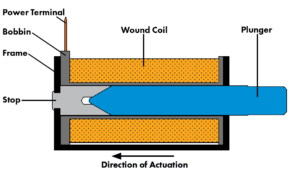
Pull Solenoid Diagram
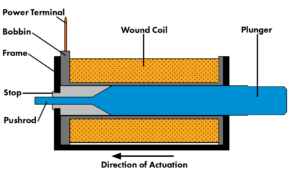
Push Solenoid Diagram
A common misconception is that if the polarity of a solenoid is reversed, the unit will repel the plunger and perform a push function. This is untrue because a solenoid coil will attract the plunger regardless of the polarity of the power supplied. The pushrod of the plunger is what allows the solenoid to use the attractive force to push.
An important item to note is that because the pushrod extends by way of the plunger retracting, the holding force or peak force of a push unit occurs when the plunger is fully retracted and the pushrod is fully extended. Keep this in mind when reading the force vs. stroke curves of push units.
How to Make One Solenoid Perform Both Push and Pull Functions
Push or Pull
In cases where the solenoid plunger and pushrod ends are symmetrical and can both be utilized, the action of the solenoid is referred to as “push or pull”. Depending on which direction you mount the unit, you can perform either function. The Duro-Tech® units pictured below have push or pull functionality. The direction of actuation remains constant in these units, so one end always pushes and one end always pulls.
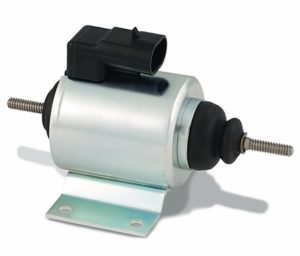
Push and Pull
To create a “push/pull” or “push and pull” unit that can accomplish both actions using the same end of the unit, the design gets a little more complicated. Two coils must be used and the position of the plunger is manipulated by alternating which coil is energized. Magnet-Schultz of America has designed bi-directional hydraulic actuators that utilize this design style.
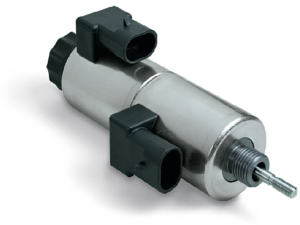
Of course, there are exceptions to these rules. Regardless of the function of the unit, a spring return can be added which allows the plunger to return to its starting position after power is turned off. The spring return feature does not change the terminology used to describe the function of the unit. For example, a pull unit with a spring return will be referred to as just that-a pull unit with a spring return. The spring return does not make it a push/pull.
More complicated designs that incorporate multiple springs, permanent magnets, or locking mechanisms have their own designations depending on their function. The design and application of these types of units will be covered in future blog posts.
Magnet-Schultz of America specializes in the custom engineering and manufacturing of solenoids, solenoid valves, electromagnets, voice coils, hydraulic tubes and coils, and locking devices. If you have any questions related to sourcing or manufacturing, you can contact us via email through the contact tab above or you can call us at 630.789.0600. We will be happy to assist in the development of your application.
Browse our past blogs for a more in-depth look at solenoid functions and subscribe to the notifications for future posts!



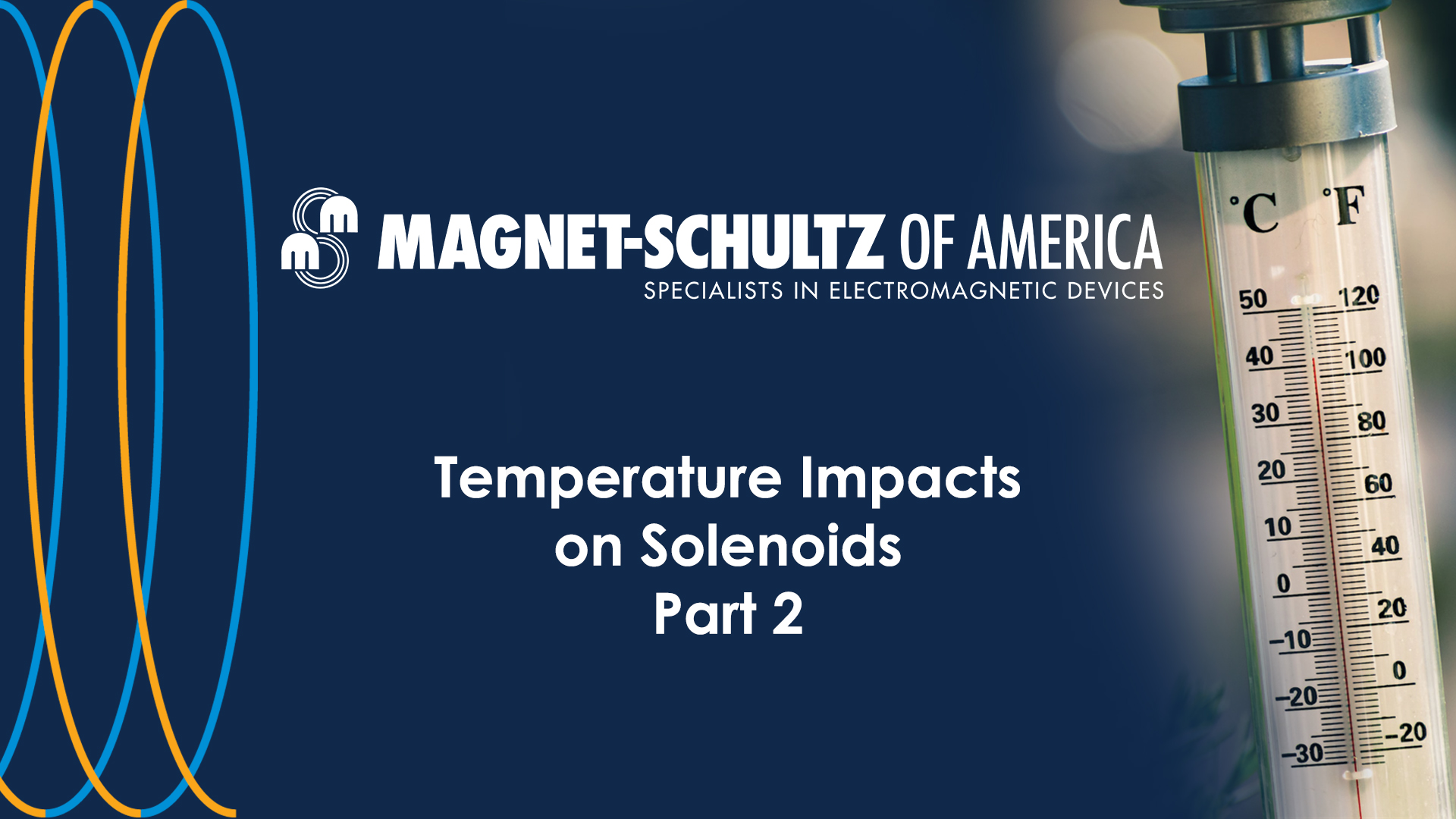



Leave A Comment